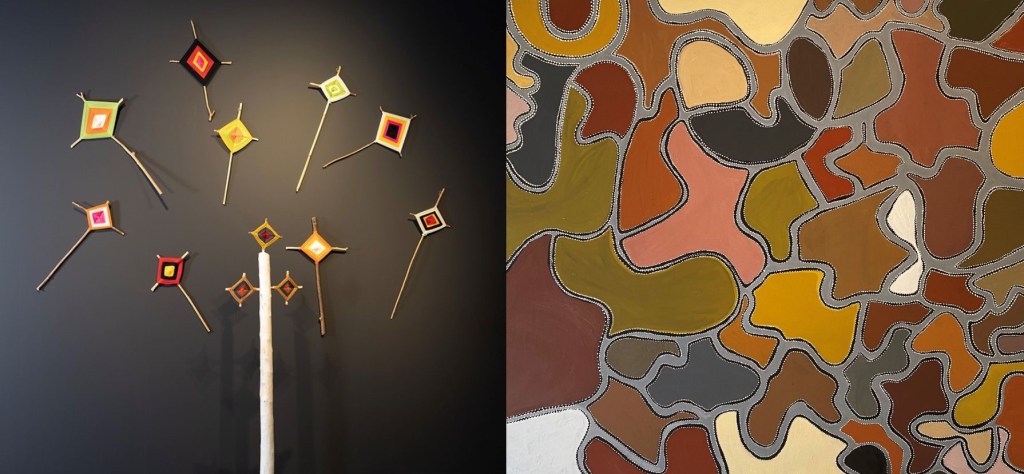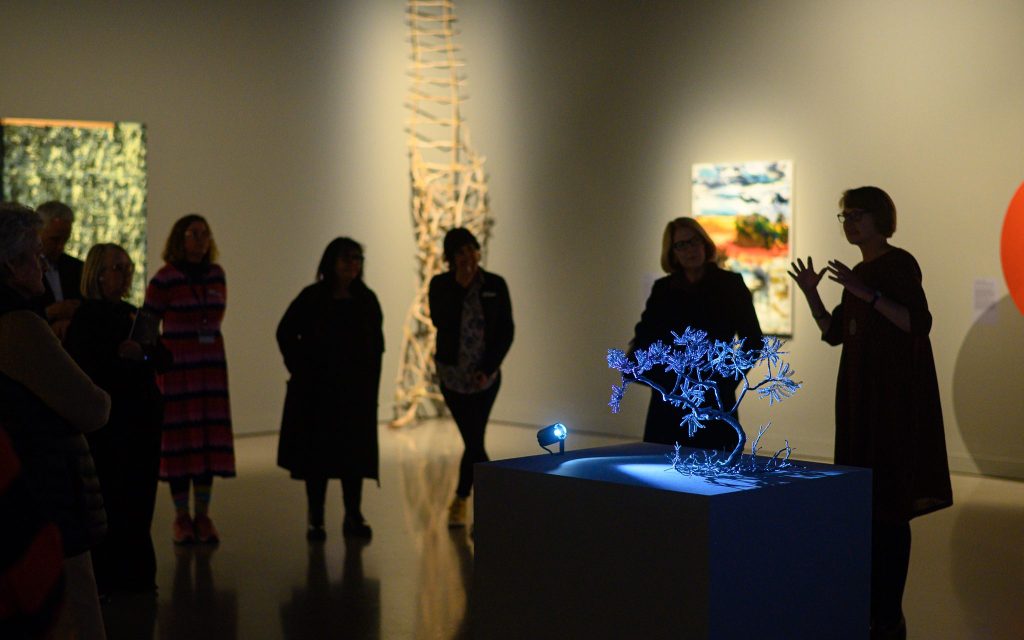The Open Borders exhibition, currently on show at John Curtin Gallery (JCG), drew initial inspiration from the 697 days of border closure that separated Western Australia from the rest of the world during the height of the COVID-19 pandemic. This compelling survey show gives voice to multiple narratives that highlight the diversity and depth of creative talent.
Open Borders is the second in a series of exhibitions under the banner of the Regional Arts Triennial – Mycelium Project. Responding to a curatorial brief posed by independent curator Annette Davis, 12 communities across the state hosted projects and exhibitions.
From these exhibitions, and with evident correlation to mycelium as a life-generating network, the final survey selection synthesises diverse yet interconnected themes.
The JCG is an outstanding space and, with insightful curatorial contribution from JCG’s Curator and Collections Manager Lia McKnight, the exhibition shines. It creates conversations, links dialogues and dives into the depths of how borders can impose upon and shape our lives.
In a work that documents the artist’s two-year attempt to return to Western Australia, Kate Alida Mullen’s The Snake Way Home speaks directly to the COVID-19 experience. A collection of bronze cast and ceramic findings stitched to earth-dyed fabric tracks her journey along the back roads of Australia avoiding lockdowns.
Many works, however, speak to the un-bordered, as artists give voice to a range of contemporary concerns. Under a shared sky, the nature of rivers, fires, feral animals and climate change exposes many borders as meaningless.
Yet, climate change is evermore apparent, as indicated by the shifting border of the shorelines. With an exquisite collection of brooches made from silver, driftwood, cast shells and barnacles, Louise Tasker’s delicate grouping of Navigating the Change, prompts concern for endangered ocean habitats in a world of increasingly acidic seas.
Similarly, In Memoriam by Janine McCrum is a deeply heartfelt ode to the plight of marri trees. Affected by climate change and the debilitating airborne canker virus, the marri tree is represented as a sacrificial chalice made of coiled cloth in front of a fragile silk wall piece. Both are stained blood-like with spilt marri resin.
As visitors walk through the exhibition spaces, the linking visual and conceptual synergies between artworks generates insight – there are echoes in the connected themes. In the strength of contemporary practice these works also open the border between artists from regional communities and urban audiences.

First Nations artists from the remote Kimberley showcase the continuum of cultural practice. Agnes Armstrong’s performance artefacts of bright string crosses, Jilbbirri & Balmarra, represent waterholes and freshwater springs. Danced by women, this performance ensures knowledge is passed across time from one generation to the next. Nearby the vibrant ochre palette of Phyllis Ningamara’s Woorrewoorrem – Wet Season showcases a land crisscrossed by tiny creeks and rivulets. Waterways course through Country without consideration for a colonial-imposed state border that now divides the custodial lands of the Miriwoong peoples.
And, in a dance dialogue with space and time, Janine Oxenham and Claudia Alessi’s performance for the film Contours reflects on ‘boundaries imagined and literal (that) at some point must dissolve, must evolve’.
Read: Performance review: Catastrophes, PICA, WA
There is much to contemplate in Open Borders. If the role of a curator is to incubate and facilitate dialogue, then the collaborative curatorial team of Davis, McKnight and JCG Director Jane King has excelled. This exhibition resonates with the richness and diversity of contemporary arts practice from regional and remote Western Australia.
Open Borders is on view at John Curtin Gallery, Perth, from 11 August to 8 October; free.
This review is published under the Amplify Collective, an initiative supported by The Walkley Foundation and made possible through funding from the Meta Australian News Fund.





